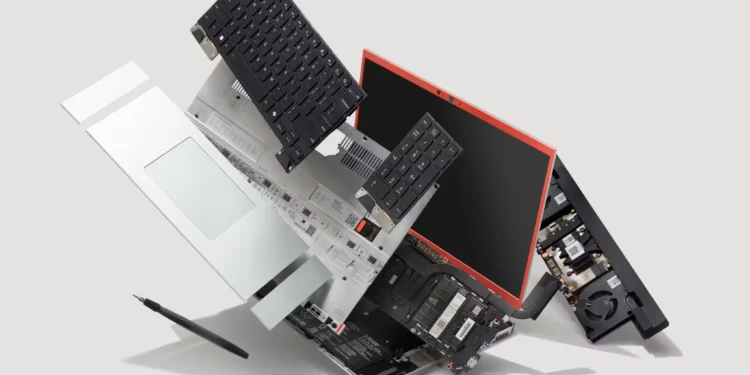Framework has done what no laptop maker has managed before: launch a gaming notebook with a graphics card you can upgrade at home. The new Framework Laptop 16, backed by Nvidia’s official support, ships with a modular RTX 5070 that users can swap out without replacing the entire machine. It’s a first for the consumer market, and a sign that modular design is finally reaching mainstream gaming hardware.
What Framework Built
The centrepiece is a new GeForce RTX 5070 (8 GB) graphics module. According to The Verge, the cartridge delivers a 30–40 percent boost in gaming performance compared to the earlier Radeon RX 7700S option. More importantly, owners can install it themselves, no specialist required.
Framework’s approach is simple but disruptive. Instead of forcing gamers to buy a whole new system every few years, the Laptop 16 lets them replace the GPU like a desktop component. As Wired notes, that means longer lifespans, fewer laptops scrapped, and a gaming machine that evolves as graphics tech does.
The Hardware Refresh
The GPU module isn’t the only upgrade. Framework also introduced a 2025 refresh of the Laptop 16’s mainboard, built around AMD’s new Ryzen AI 300 series. The update brings support for Wi-Fi 7, a sharper webcam, redesigned thermals, and improved input devices, ensuring the machine keeps pace with other premium gaming laptops.
Alongside the refresh, Framework is shipping a 240-watt USB-C PD charger. It’s the first laptop power brick to hit the full 240-watt spec, making it possible to charge the Laptop 16 at maximum performance over a single USB-C cable.
These changes may seem incremental compared to the GPU breakthrough, but together they reinforce Framework’s central promise: a high-end laptop that isn’t locked in time.
Why NVIDIA’s Involvement Matters
Framework’s first modular graphics option, released in 2023, used an AMD Radeon RX 7700S. That was already a milestone, but the shift to Nvidia is far more significant. The new module arrives as an Nvidia GeForce RTX 5070 (8 GB), officially sanctioned by the company.
That approval matters. As The Verge points out, it’s the first time Nvidia has put its weight behind a modular, user-upgradeable GPU in a laptop. Industry watchers see this as a validation of Framework’s approach, and a hint that graphics giants are willing to support designs that extend a laptop’s usable life.
In practice, Nvidia’s involvement gives the Laptop 16 far more credibility with gamers. The company dominates the discrete GPU market, and its decision to back Framework could encourage other PC makers to rethink locked hardware.
What It Means for Consumers
For gamers, the promise is simple: no more buying a new laptop every two or three years just to keep pace with graphics. Instead, the Framework Laptop 16 lets owners upgrade the GPU at home, the same way they might swap a card in a desktop. That could translate into significant cost savings over time.
There’s also a sustainability angle. As Wired notes, the ability to replace only the GPU extends the laptop’s lifespan and reduces the number of devices discarded prematurely. For a market dominated by soldered, throwaway designs, this is a radical shift.
The convenience factor is worth highlighting too. With the addition of Framework’s new 240W USB-C charger, gamers can now run high-performance setups through a single cable. That’s a quality-of-life improvement that pairs neatly with the modular GPU concept.
Together, these changes position Framework not just as a challenger brand, but as a company rewriting expectations for how laptops should be built, sold, and upgraded.
The Takeaway
The Framework Laptop 16 is not just another gaming notebook. It challenges the status quo. With Nvidia officially backing the module, Framework has secured credibility with gamers and legitimacy within the industry.
If the experiment succeeds, it could pressure bigger brands to rethink the throwaway model of laptop design.













